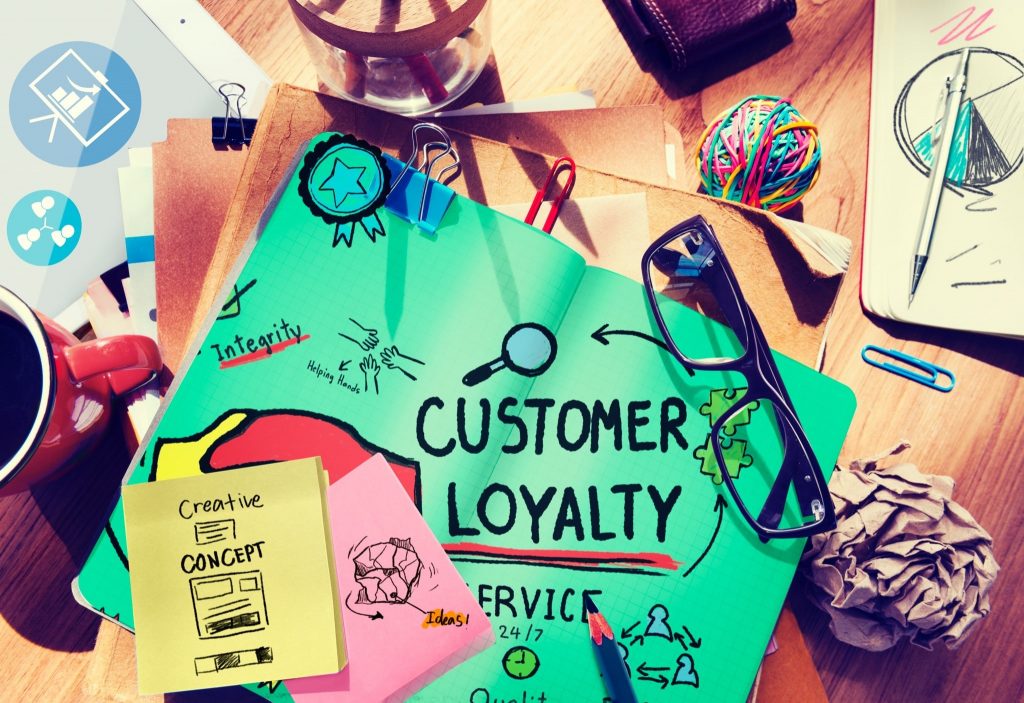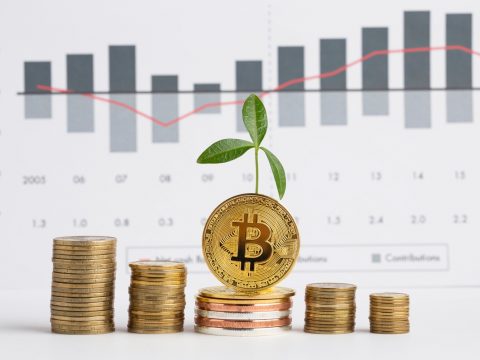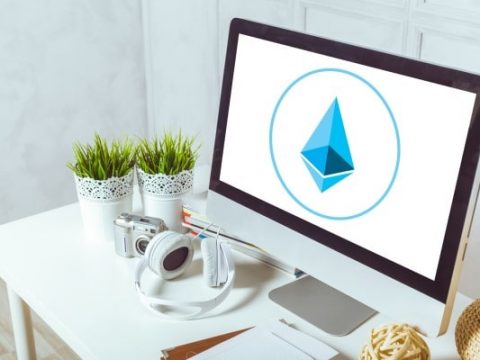Blockchain Loyalty,a New Revolution for Loyalty Programs

Blockchain is another ground-breaking creation in the modern era of fast-growing technical developments. Blockchain is a public, digitally accessible database that allows decentralized transactional data management. Blockchain might be used for a number of economic transactions and record-keeping reasons in a range of industries, including but not limited to healthcare, technology, accountancy, consulting, and manufacturing. Despite the fact that blockchain technologies are still in their infancy, their ability to transform global industrial and consumer behaviors is impressive. For its consumers, blockchain also improves security, privacy, usability, and data integrity. Blockchain has been shown to alleviate the limits and inefficiencies that firms encounter today while delivering loyalty program services without the usage of such technology. Companies might improve the consumer experience by integrating blockchain, which allows for safe and quick redemption from a variety of providers. As a result, businesses might use this technology to tempt customers with immediate benefits for every transaction.
Loyalty programs have prospered in travel, retail, financial services, and other sectors of the economy. According to the biannual 2015 Colloquy Loyalty Census, the average US household engages in 29 distinct loyalty programs. As a result, there are a bewildering number of point systems and redemption possibilities, as well as time-consuming methods for transferring points among program partners. Loyalty programs are ripe for innovation to make them more user-friendly. Blockchain loyalty might be the solution.
Blockchain and Bitcoin
Blockchain is best recognized as the technology underpinning Bitcoin. It allows a network of people to share a record of transactions. A unique token is produced and allocated to each new transaction (for example, when a loyalty point is issued, redeemed, or swapped). Tokens are organized into blocks (every ten minutes, for example) and dispersed over the network, simultaneously updating all ledgers. Without the need for middlemen or centralized databases, new transaction blocks are authenticated and connected to earlier blocks, resulting in a solid, secure, and verifiable record of all transactions. Blockchain loyalty might allow fast redemption and exchange for numerous loyalty point currencies on a single platform for users managing several loyalty schemes. Consumers would not have to look up each program’s possibilities, limits, and redemption criteria if there was simply one “wallet” for points. A blockchain revolution threatens all blockchain loyalty programs, but the tourism sector is likely the most susceptible. Program points might even differ by trip component (flight, vehicle rental, hotel, meal), resulting in fragmented fact collecting with some points never being cashed. For the ordinary person, accumulating enough points to get a significant reward might be challenging.
How blockchain meets customer’s expectations
Businesses would be able to break free from the constraints of tightly defined, one-size-fits-all schemes and cumbersome redemption processes. Consumers are increasingly expecting individualized (rather than segmented) travel products and digitally-enabled one-stop services, as seen by the expansion of OTAs. The blockchain loyalty would make it possible to join both large and small partners easily, making it much easier to create on-trend deals while essentially removing the back-end annoyances of point redemption.

Loyalty and rewards programs are divided into two categories. To begin, there are the aforementioned loyalty programs, which reward customers for their commitment. Second, there are discounts that entice customers to make a single purchase by offering a one-time discount or rebate, with no subsequent loyalty relationship. The first significant distinction is that blockchain loyalty programs are not restricted to a single usage and may be combined with other incentive programs. Although coupons provide comparable benefits, they are a one-time-use cashback rewards program that cannot be coupled with other offers. Coupons, unlike loyalty programs, generally have an expiration date after which they may no longer be utilized. In any situation, the perks supplied entice customers to build a relationship with a company, even if it is only for one transaction, in the hopes of gaining a return client. Nonetheless, blockchain in loyalty programs are clearly more effective at keeping clients since they compensate customers for recurring purchases. Consumers who make frequent purchases, for example, receive more rewards than others in the tiered loyalty program; hence, repeat customers are greatly encouraged. Next, because customers must register for blockchain in loyalty programs, firms are able to collect and analyze important data. Most coupons, on the other hand, do not require any information from clients to be utilized, making them less beneficial in contrast. Finally, being a direct brand-to-consumer program, a coupon has the additional short-term purpose of quickly unloading surplus inventory, whereas blockchain loyalty programs are more concerned with long-term transactions.
Traditional reward schemes on the market today are quite different. Despite this diversity, loyalty programs may be divided into many categories: punch cards, points, tiered, fee-based, cash return, and coalition blockchain loyalty programs.
📌 Read more
To find out more about this topic, we recommend reading this article : Blockchain and Internet of Things (IoT)
Punch Cards
A customer’s card is “punched” each time they purchase a particular commodity or service. The consumer then redeems the card for a free good or service when it has been filled out. Although organizations now provide digital punch cards as a consequence of technological advancements, the premise remains the same. When a consumer buys a pretzel at Wetzel’s Pretzels, for example, their phone is scanned, and the transaction is logged as a dot on the Rewards meter on the app. The consumer is entitled to a complimentary pretzel after purchasing six pretzels.
Loyalty Points Programs
Customers that participate in a point loyalty program are rewarded for completing a specific purchase or behavior. You can gain points for transactions, interaction, or visits and redeem points for prizes as a customer. Many corporations have recently broadened their point blockchain loyalty programs to reward non-transactional behavior, such as installing a mobile app, signing up for an e-newsletter, or liking a page on Instagram or Twitter. Other acts keep the consumer interested and informed about the company’s products and services. This sort of program is best suited for businesses that have a high volume of transactions and interactions. Dick’s Sporting Goods, for example, provides a ScoreCard Rewards program in which consumers receive one point for every dollar spent and are eligible for a $10 reward after earning 300 points. There are some blockchain loyalty program service providers that can remarkably help firms to participate in blockchain. For instance, Mobiance interconnects loyalty programs in a globally integrated platform based on the ethereum network to assist brands in retaining their loyal customers with cutting-edge technology. The integration also generates brand awareness and introduces brands and SMEs to new customers.
Mobiance offers brands and customers the opportunity to engage with blockchain technology conveniently, directly and indirectly, without the need for cost-intensive integration for brands or an upfront investment for customers.
Programs with Differentiated Points Customers gain points in tiered rewards schemes depending on their activities or transactions. Customers are put in different levels within the rewards program depending on their spending and purchase behavior, which makes this program unique. Members of the Starbucks Rewards program, for example, can be assigned to one of two levels: Gold or Green. A Green member must accumulate 300 stars in 12 months to reach Gold Level. Customers who become Gold members receive all of the perks they earned as a Green member, as well as new special incentives such as a complimentary drink or food item after earning 125 stars. Essentially, the benefit of this program is that it offers both immediate satisfaction and realistic rewards in the near term.
There are some blockchain loyalty program service providers that can remarkably help firms to participate in blockchain. For instance, Mobiance interconnects loyalty programs in a globally integrated platform based on the ethereum network to assist brands in retaining their loyal customers with cutting-edge technology. The integration also generates brand awareness and introduces brands and SMEs to new customers.
Mobiance offers brands and customers the opportunity to engage with blockchain technology conveniently, directly and indirectly, without the need for cost-intensive integration for brands or an upfront investment for customers.
Loyalty Programs with a Fee
Charge-based blockchain loyalty programs function in the same way as an all-you-can-eat buffet does: the client pays a fee to join the program in exchange for an “unlimited” benefit. This scheme encourages recurring business because the advantages have already been paid for (Customer Insight Group). Customers can break even at the very least, but there’s a chance they’ll get more advantages than they paid for. Amazon Prime, for example, charges users an annual membership fee in exchange for free expedited shipping.

Loyalty Programs With Cash Back
Payback reward programs provide cashback on a variety of the company’s products and services. Customers are enticed to purchase at the company regularly to improve their savings – especially because the money obtained in exchange makes the company’s items somewhat cheaper than rivals. Customers may get 3% cashback on specified purchases and 1% on all other transactions using TD’s TD Cash Back Visa Infinite Card, for example.
Program of Non-Monetary Rewards
These initiatives place a greater emphasis on customer values than on monetary rewards. Customers are still engaged in this type of activity, and it helps to favorably affect the brand’s impression by taking acts that benefit the greater good. For every pair of shoes purchased, the Toms One for One initiative sends a pair to a kid in need.
Loyalty Programs in the Coalition
Coalition loyalty programs may have some of the same characteristics as traditional loyalty programs, but many corporations frequently back them. This raises the consumer’s incentives and so makes the product more appealing. Air Miles points, for example, may be earned through a variety of products and partners (Customer Insight Group). These are just a few of the most common types of blockchain loyalty programs. Many programs fall under more than one category, and loyalty programs frequently employ several systems to reward and retain clients. The bestowal of practical value, the collecting and use of consumer data, rising consumer switching costs, and enhancing customer retention rates are all common elements of all loyalty programs.




